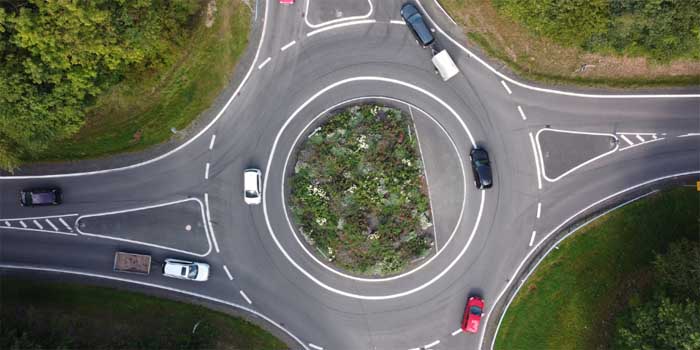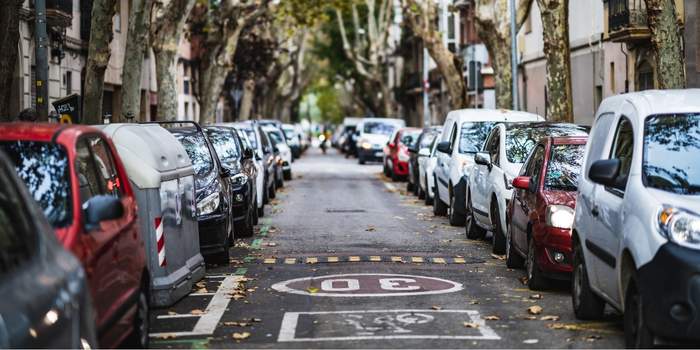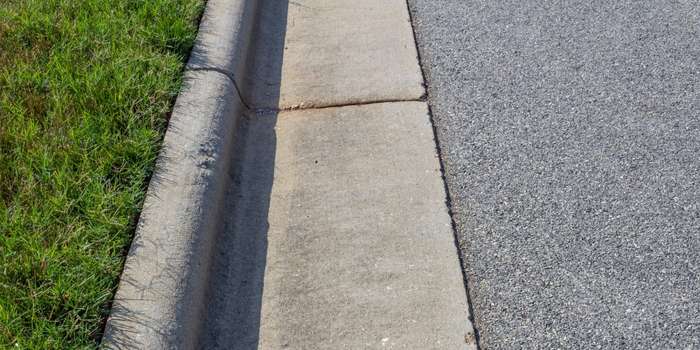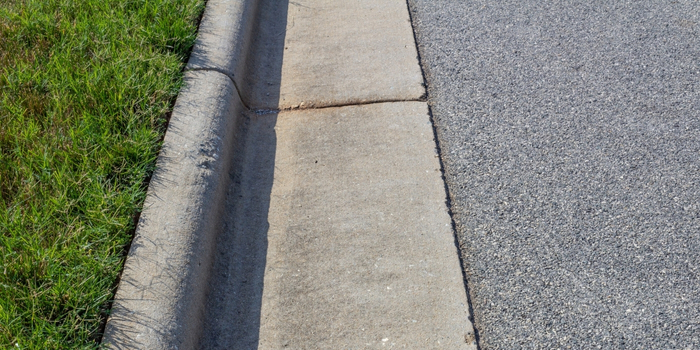Do you know how engineers plan roads to give you enough space and why some roads are wide while others are narrow? Actually, road dimensions decide how safe and comfortable your journey will be.
That’s why, every type of road has its own standard width and size. Today you will learn all legal rules for road measurement along with its lane and pathway dimensions.
Road Width Standards
Road authorities and engineers have to follow some legal standards and regulations to construct roads. Because when you travel on a road, its width matters a lot for safe driving. Basically, road width standards tell you the right dimensions of road. So that you will have enough space to drive.
You will see highways built very wide so many vehicles can pass at the same time. But, rural roads are narrow. That means, each type of road is made according to rules requirements.

What are the Different Road Types and Dimensions
Main Roads
The main road is the central path that connects important areas in a city. It has lanes about 3.65 meters (12 feet) wide. But, the lane size is not always the same. It can change according to traffic, larger vehicles and where your car turns. For example: busy spots of road will wide. Generally, roads with two lanes have two 12-foot lanes.
Secondary Roads
To join small areas with the main road, you can build secondary roads. They have one or two lanes and most are between 6 to 8 meters wide. Each lane will be 11.5 feet. However, road shoulders also add 1.5 to 2.5 meters width on each side of roads. While in mountain areas, you will see that secondary roads shrink to 5 meters.
Residential Streets
Most residential roads are built around 22 and 50 feet wide. If you need extra space for parking or two lanes, you can construct a 34 to 40 feet wide road. You will also notice that some neighborhoods have smaller streets as 22 to 26 feet. But, they still allow you safe driving and access. Always remember, the final width usually depends on your local city rules & planning codes.
Service Road Dimensions
Service roads follow the main roads. You can use them to reach small businesses and your houses. They are smaller than highways and have a width of 3 to 3.5 meters width. Also, service roads paved shoulders add another 3 meters.
Sometimes, you will observe that unpaved shoulders of 1–2 meters are included for walkers/cyclists. Overall, service roads may differ in size but are always narrower than main roads.
National Highway Width (Road Lane Width)
-
2-Lane Highway
You will find these roads in less crowded areas. The dimension of most two-lane highways ranges between 24 to 28 feet. With shoulders on both sides ( 6 to 10 feet), each lane has 12 feet width. In this way, you can also drive cycles and can use it for emergencies. If we talk about the total width of a two lane road, it will be 28+ feet.
-
4-Lane Highway
Well, a four-lane highway is usually 24 to 32 meters in total width. But, the exact dimension depends on the road location such as in a city or countryside. The median presence can also impact the size of the road. Every lane is about 3.3 to 3.7 meters wide. As a result, you will see, you can easily drive and chances of accidents will be reduced too.
-
6-Lane Highway
A six-lane highway is usually about 29 meters (95 feet) wide. You will find each lane is around 3.5 meters (11.5 feet). The total width includes the lanes, paved shoulders, and unpaved edges. Depending on whether you are in a city or countryside, the dimension may change a little. You can see these measurements help make the road safe and smooth for traffic.
-
8-Lane Highway
The 8-lane highway has four lanes in each direction. These roads are usually about 120-140 feet (36-43 meters) wide. That means, each lane is around 12 feet (3.7 meters) wide with its shoulders and a median if the highway is divided.

Special Roads and Their Dimensions
Expressways and Freeways
Expressways & freeways are the widest and fastest roads. You can use them for long distance travel with high speed vehicles. The dimensions of these roads can be changed according to location, traffic load and rules.

However, its lanes have a width of 12 to 12.3 feet. The shoulders are 3 meters wide. But the median size is not fixed for every expressway/freeways.

Bridges and Flyovers
The size of road bridges are based on the type of road connected with it. You may find single lane bridges or multi lane bridges as well. The minor bridge has a length of 60 meters & major berghe have 60+ meters length.

Most flyovers are 12.2 meters wide. This includes a 10.7 meter road for your vehicles and 1.2 meter sidewalks on each side.

Roundabouts Size
The size of roundabouts are different from traffic circles. Small mini roundabouts can be 60 feet wide. You will find single lane roundabouts 100+ feet and large multi lane can be 150 feet or more. Mostly, the dimensions of the roundabout depend on traffic flow.

Minimum Road Width For 2 Way Traffic
When two-way traffic is allowed, you must construct a wide road enough for vehicles to pass safely. For all vehicles, it should be at least 6.75 meters wide. The size of 5.5 meters will be enough for light traffic. Each lane dimension is 3.5 meters, so a two-lane road is overall 7 meters wide.
One Way Road Dimensions
Lanes on a one way street can be as small as 3.65 to 3.7 meters (12 feet). Well, the overall width of the road is determined by its use. Similar to a lane on a two-way road, one way roads with more traffic should be constructed wider.

Carriageway Width
Basically, the portion of the road you drive your car is called a carriageway. Its size varies according to the number of path lanes. A single-lane road is typically 3.75 meters wide. On the other hand, a two-lane road is roughly 7 meters wide. Plus, larger highways are 3.5 meters wide for each lane.

Parking Road Dimensions
You can use the parking lot part of the road to stop and park your vehicles. If we talk about its standard size, you will get roughly 8 feet by 16 feet (2.4 m × 4.8 m) in parking spots. While, larger size of 3 m × 5.5 m is mostly advised for comfort and ease of parking.

Highway Shoulder Width
Shoulder width on highways is important for your safety and smooth traffic flow. The minimum width depends on speed, traffic and road type. In such a way, high-speed highways usually need at least 3 meters.

But, smaller roads may have less, like 2 meters or lower. Wider shoulders also provide you extra space for cycle riding and pedestrians use. This type of road shoulder size keeps the main lanes clear for safe highway driving.
Width of Median
The width of a median highly affects how a divided highway works. There are two types of median: wide and narrow. The wide median is 30 feet or more. In this case, left-turn paths will cross each other.
A narrow median is less than 30 feet, where left-turn paths do not cross. Further, median width is measured between the inside edges of the road lanes.
Road Curb Dimensions

Curbs are also called kerbs. They used to mark road edges, separate sidewalks and guide rainwater with placement of curb ramps. The size of road curbs changes with the type. For example:
- Sloped curbs are lower than vertical curbs. They are constructed with a height of 3-6 inches (7.5-15 cm).
- Vertical curbs are generally 4 to 8 inches (10-20 cm) high and 6-12 inches (15-30 cm) wide.
- Round curbs have different shapes, not flat or sloped. They have a height of 4 to 6 inches. Additionally, round road curbs are made in blocks with standard lengths of 18, 24 or 36 inches.
Road Divider Dimensions
Long and rectangular blocks are used as road dividers to separate lanes. They are approximately 2 meters in length, 65 to 85 cm in height and 25 cm in width. Well, the majority are made of concrete. They are 3 meters long, 2.5 feet high and 24 inches wide.

Standard Sidewalk Dimensions
Proper footpath dimensions are very important to manage pedestrian traffic. That’s why its size is also decided based on the volume of people walking on sidewalks. According to ADA (American with Disabilities Act), sidewalks should be at least 3 feet (36 inches) wide.

Moreover, for your busy road zones, the 4 to 5 feet dimension is required. If you plan to construct sidewalks in your commercial areas, you should go for 8 to 10 feet or wider. Around trees or other landscaping, sidewalks must have the same width all the way along.
Conclusion
Finally, you have clear information about the logic behind road size and how it helps you to manage safe vehicle movement. You can observe the important planning behind every road you travel.
Once you have finalized your road construction project, you can contact our team for further road safety products. We will also send you all kinds of road construction materials and equipment.


-80x69.png)

